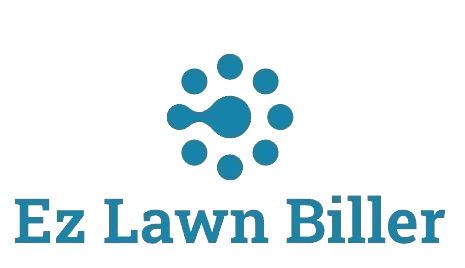How to Optimize Routes for Your Lawn Care Business
In the competitive world of lawn care, efficient route optimization is crucial for maximizing productivity and enhancing customer satisfaction. This blog post will delve into the importance of route optimization for lawn care businesses, explore various strategies to streamline operations, and highlight tools that can simplify the process. By the end of this article, you will have practical insights to improve your routing efficiency and grow your business.
Effective route optimization can significantly reduce travel time, fuel costs, and wear on equipment while ensuring that your team can serve more clients in a day. This aspect of business operations is essential—not only for operational efficiency but also for providing excellent service to customers. As we explore the various methods for optimizing your lawn care routes, you will discover how technology and strategic planning can work together to elevate your business.
Understanding the Importance of Route Optimization
Route optimization is the process of determining the most efficient path for service delivery. In lawn care, this involves planning the order in which properties are serviced to minimize travel time and fuel costs. According to a study by the American Transportation Research Institute, optimizing routes can save companies up to 30% in fuel costs, which directly impacts bottom-line profits.
Moreover, an optimized route schedule can increase customer satisfaction. By arriving on time and maintaining consistency in service delivery, your business can build a reputation for reliability. This is particularly important in the lawn care industry, where timing can be critical for services such as mowing and fertilization.
Additionally, efficient routing allows for better use of resources. When your team spends less time on the road, they can focus more on the quality of their work, leading to happier clients and potentially more referrals. Embracing route optimization is not just a strategic move; it’s a necessary evolution for any serious lawn care business.
Implementing Technology for Route Optimization
One of the most effective ways to optimize your routes is through technology. Software specifically designed for lawn care businesses, such as a comprehensive lawn billing software, can integrate route planning into your overall operational workflow. Such software often includes features that allow you to automatically generate efficient routes based on client locations and service types.
For example, by using a lawn service app, you can input your daily service requests, and the app can calculate the best route, taking into account factors like traffic patterns and client appointments. This level of automation not only saves time but also reduces the risk of human error that can occur when routing is handled manually.
Moreover, GPS technology can provide real-time tracking of your team’s movements. This means that if a last-minute appointment comes in, you can quickly adjust the day’s plan without significantly impacting your overall schedule. By utilizing technology in this way, lawn care businesses can ensure that they remain agile and responsive to client needs.
Analyzing Client Locations and Scheduling
A critical step in route optimization is a thorough analysis of client locations and scheduling. Understanding the geography of your service area is essential to creating an effective route. Start by mapping out where each client is located and categorizing them based on their proximity to one another. This visual representation can guide your daily scheduling decisions.
Consider using tools that allow you to create zones or service areas. By grouping clients within a certain radius, you can minimize travel time between appointments. Additionally, always take into account the time of day when scheduling services. Traffic patterns can vary significantly, so planning around peak hours can lead to more efficient routing.
Implementing a recurring scheduling system can also streamline operations. For example, clients who require weekly or bi-weekly services can be scheduled on the same day each week, which not only helps in route planning but also in maintaining consistent service intervals. This consistency enhances customer trust and satisfaction.
Reviewing and Adjusting Routes Regularly
Even after you have established optimized routes, it is essential to regularly review and adjust them. Client needs may change over time, and new clients may come on board, which can impact your existing route structure. Periodic assessments can reveal opportunities for further efficiencies.
Use data analytics to track key performance indicators such as average travel time, fuel consumption, and client feedback. This data can highlight areas where adjustments may be necessary. For instance, if you notice that certain routes consistently take longer than expected, investigate the cause and make necessary changes to improve efficiency.
Moreover, maintaining open communication with your team can provide valuable insights. Drivers and lawn care professionals often have firsthand experience with traffic patterns and customer preferences that can inform route adjustments. Regular team meetings can facilitate discussions on what is working and where improvements can be made.
Using Customer Feedback for Continuous Improvement
Customer feedback is an invaluable resource for refining your service delivery, including routing. Actively solicit input from your clients regarding their service experience, particularly regarding timeliness and communication. Understanding their perspective can help identify potential areas for improvement.
For instance, if clients frequently mention that services are inconsistent or that your team arrives at varying times, this could signal a need for a more structured routing system. By addressing these concerns, you can enhance customer satisfaction while simultaneously improving your operational efficiency.
Furthermore, consider utilizing surveys or feedback forms that clients can easily access after service completion. This information can be instrumental in making data-driven decisions about route adjustments, scheduling changes, and overall service offerings.
Best Practices for Efficient Routing
Now that we’ve explored the importance and strategies for route optimization, let’s outline some best practices that can help ensure your lawn care business operates efficiently:
- Leverage Software Tools: Utilize lawn service software that can automate route planning and integrate with your existing operations.
- Keep Routes Flexible: Be prepared to adjust routes based on real-time conditions such as traffic and weather.
- Prioritize Communication: Maintain constant communication with your clients and team to ensure everyone is informed about scheduling changes.
- Regular Training: Train your staff on the importance of efficient routing and how to utilize the tools available to them effectively.
- Monitor Performance: Regularly review performance metrics to identify trends and areas for improvement.
By implementing these best practices, your lawn care business can not only optimize routes but also create a culture of efficiency and customer satisfaction.
Integrating Billing Systems with Route Optimization
Another aspect to consider is how integrating your routing processes with billing systems can enhance efficiency. An effective lawn service computer program can help streamline the billing process alongside route planning. When these two systems are aligned, it reduces administrative workload and increases accuracy.
For instance, when a route is optimized and services are performed, the billing software can automatically generate invoices based on the services rendered. This automation eliminates the need to manually input service details into your billing system, reducing the chances of errors and ensuring timely invoicing.
Furthermore, this integration provides better insights into profitability per route. By examining which routes generate the most revenue against their operational costs, you can make informed decisions about your service offerings and pricing strategies.
Implementing a Feedback Loop for Route Optimization
Establishing a feedback loop can significantly enhance the effectiveness of your route optimization efforts. A feedback loop involves continually collecting data from service operations, analyzing it, and making informed adjustments.
For example, after each service, you can gather data regarding the time taken, fuel used, and client satisfaction. This information can then be assessed at regular intervals to identify patterns and areas needing refinement.
Establishing key performance indicators (KPIs) for your routing process can facilitate this feedback loop. KPIs might include average route length, fuel efficiency, or client wait times. By continually monitoring these metrics, you can ensure your routing remains optimized over time.
Conclusion
In conclusion, optimizing routes for your lawn care business is not just a strategic advantage; it’s a necessity in today’s competitive marketplace. By leveraging technology, analyzing client locations, and regularly adjusting routes based on feedback and performance data, you can significantly enhance operational efficiency.
The importance of route optimization extends beyond cost savings; it impacts customer satisfaction, team productivity, and overall business growth. As you implement these strategies, consider utilizing tools like lawn billing software to streamline your operations further.
Finally, remember that route optimization is an ongoing process. Stay proactive in seeking improvements and responding to client needs, and you’re sure to see positive results in your lawn care business. Start implementing these strategies today, and watch your operational efficiency soar!




